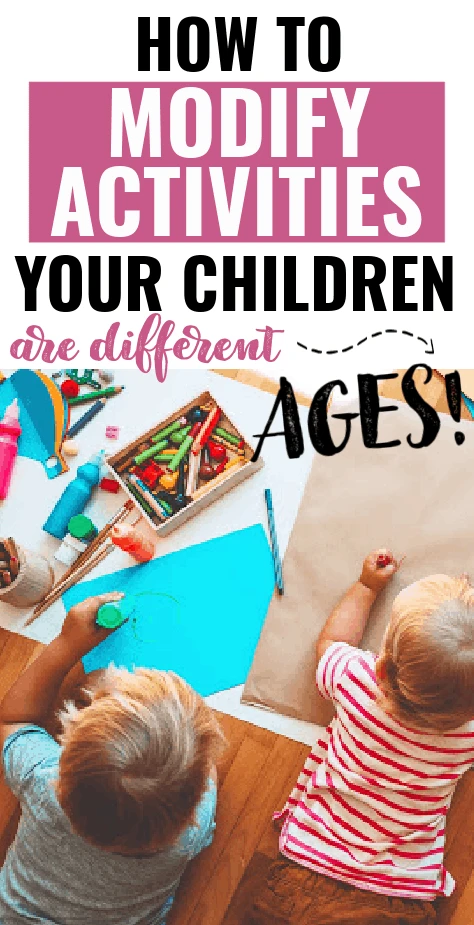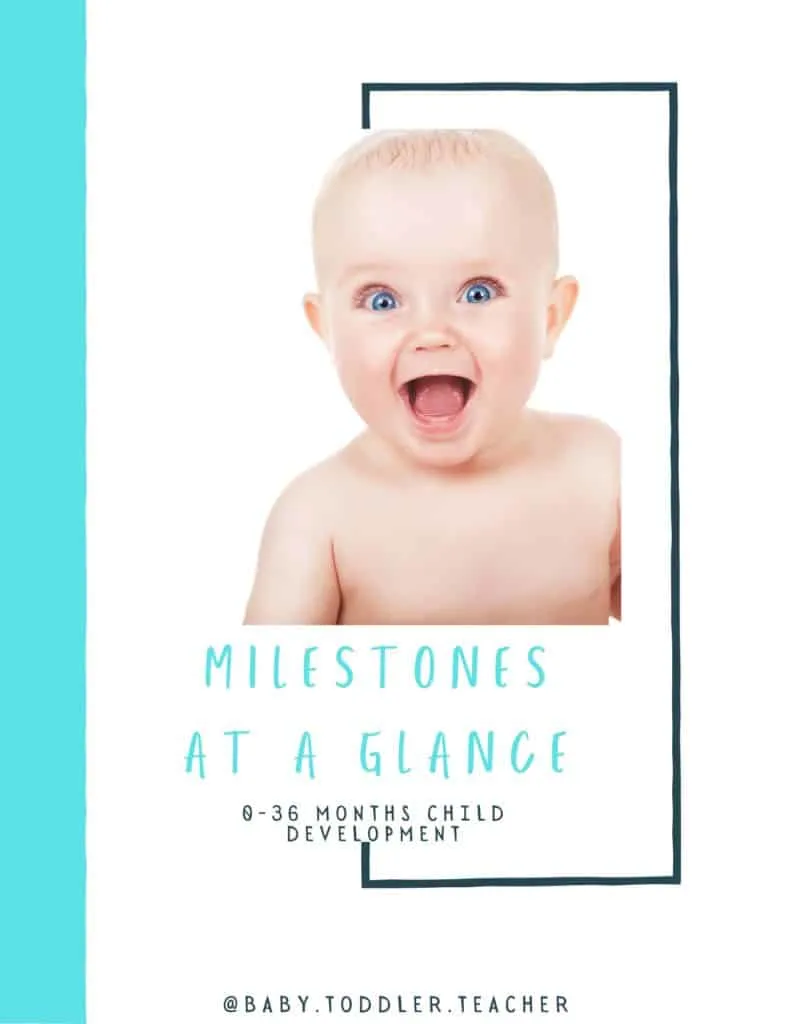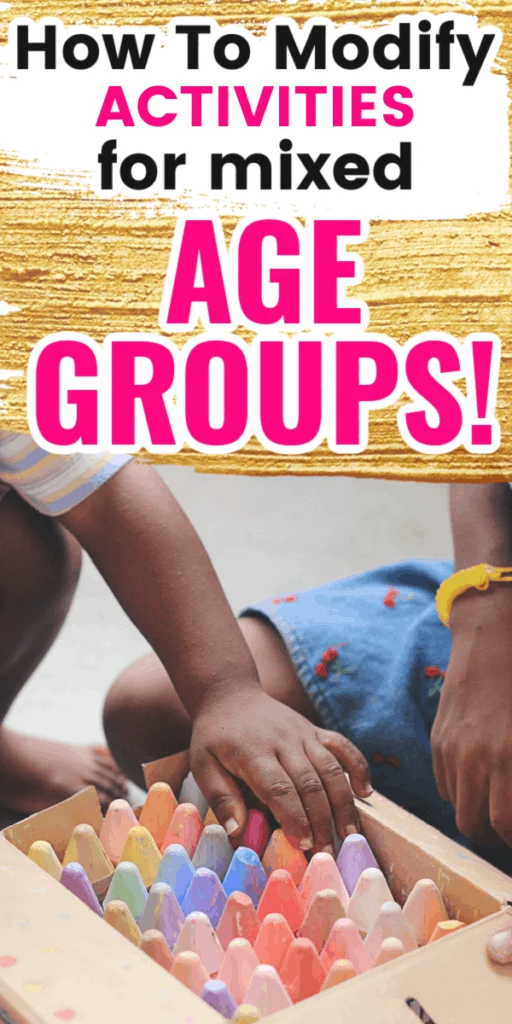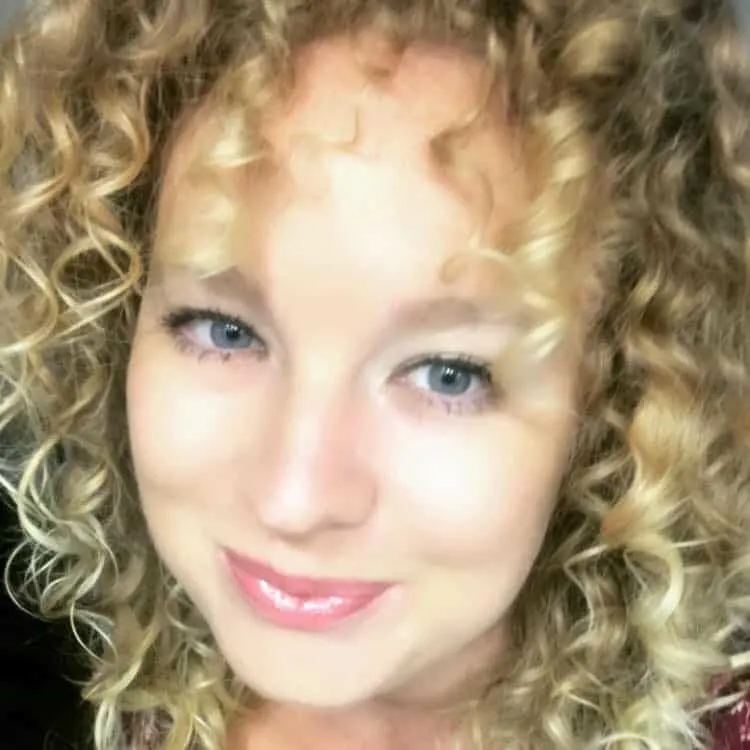Whether you are a childcare provider with multiple children to take care of or a mom caring for siblings of different ages it is often necessary to modify activities so that everyone can participate (and be happy!)
Yes, you could just plan different activities for each child that is suitable for their age…but that is a lot of work.
Keep things simple by just adapting the activity to fit the level of the child.
This way their is minimal work for you and everyone is engaged and learning.
There are 4 main ways to modify activities for little ones which I will explain more in depth below.
You can also encourage new skills by teaching your little one during daily routines.
This is a great way to get things done, promote learning, and not have to plan activities.

(This post may contain affiliate links. To read our full disclosure policy click here.)
Provide Prompts to Make Activities Age Appropriate
Use different levels of prompts to make an activity harder or easier for a child.
For example, if you are playing with blocks with a baby and a toddler there are different ways to provide prompts when needed.
For a younger child, you may use light physical guidance to show them how to actually stack a few blocks.
For the older child you may model for them how to build a garage for their car.
Let’s look a little closer at the different levels of of prompts:
Modeling: Modeling is a non-invasive prompt. You simply model what behavior or action you want your child to do. Instead of telling them to stack the blocks just do it yourself and see if they mirror you.
Gestural Prompt: Pointing is a great example of a gestural prompt. It is less invasive then a physical prompt and provides a visual cue.
Verbal Cues: Verbal cues can mean just using one word to prompt a child to do something or using a full sentence. Using less words is usually the best option. Sometimes we tend to use too many words and complicated sentences which can be confusing to young children.
Using simple short phrases during play is a great way to boost vocabulary as they are easy for little ones to imitate.
Physical Guidance: This prompt is when we use physical touch to help a child accomplish a task. This could mean gently placing your hand over your child’s hand to help them zoom a car or using hand over hand to support them while they draw a circle.
When you using prompts always start with the least invasive prompts like modeling and gestures. The end goal is to use no prompts at all!
Peer Support to Help Each other Learn
If you have an older child and a younger child, let the older child do the teaching!
If the younger one is struggling prompt the older one to help them out. This allows both children to participate in different ways.
Older siblings or peers can make wonderful role models when teaching new skills.
It is also fun and can be a confidence boost if they teach their younger peer something new.
Open Ended Activities
Choose activities that are appropriate for different ages or skills levels.
Try to think of things that you can use in multiple ways and allows children to be creative.
Here are some examples of things to try:
- Blocks
- Colors and Paper
- Baby Dolls
- Boxes
- Tupperware Containers
- Play Dough
You can see some more ideas HERE.
Many of these activities are simple to modify from one skill level to the next by adjusting your level of prompting.
Watch For Cues
Sit back and watch your child or children play.
Children are naturally curious and are actually pretty efficient at figuring things out on their own.
Using ZERO PROMPTS is suitable for many activities.
Watch how your child interacts with materials and add prompting when you think a little extra help is needed.
I hope this information will make it easier to plan your next activity with your little ones!

Grab your FREE Milestone Guide HERE.
Related Posts You Will Enjoy
Gifts for Toddlers that Aren’t Toys
How to Find a Babysitter You Can Trust
Preparing for a Second Baby Checklist
How to Teach Baby Sign Language for Beginners
The Best Outdoor Toys for Two Year Olds


Kayla O’Neill has a master’s degree in education as well as a bachelor’s degree in special education with an emphasis in early childhood education. She has been working as a developmental therapist with babies and toddlers in early intervention since 2012. She is also a mom with two young children.